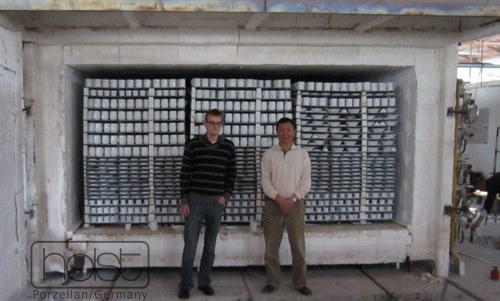Oxidation firing
In porcelain production and porcelain finishing, there are two different types of firing methods, which differ considerably and can lead to very different firing results.
- Reduction firing
- Oxidation firing
Oxidation firing
This firing technique of oxidation is based on the opposite of the reduction process, in that the furnace is enriched with oxygen. This creates a chemical reaction in which the oxygen gives off electrons, thereby increasing its oxidation number, while the ceramic mass absorbs these electrons and is thus reduced. Electric furnaces in the ceramics industry basically work in the oxidation process, because a reduction firing destroys the electronic heating strokes.

In the oxidation firing, the porcelain can be fired "open" - i.e. without capsules, which achieves a higher utilization of the quantitative yield. Much larger quantities can be produced in the oxidation process than in the reduction firing. The picture above shows one of the largest chamber kilns in which Holst porcelain has ever been produced. This 56 qbm block-kiln size can produce up to 50,000 stacking cups in one firing process. Under full load and by using a specially developed firing curve, a firing process can be completed in just under 10 hours.
